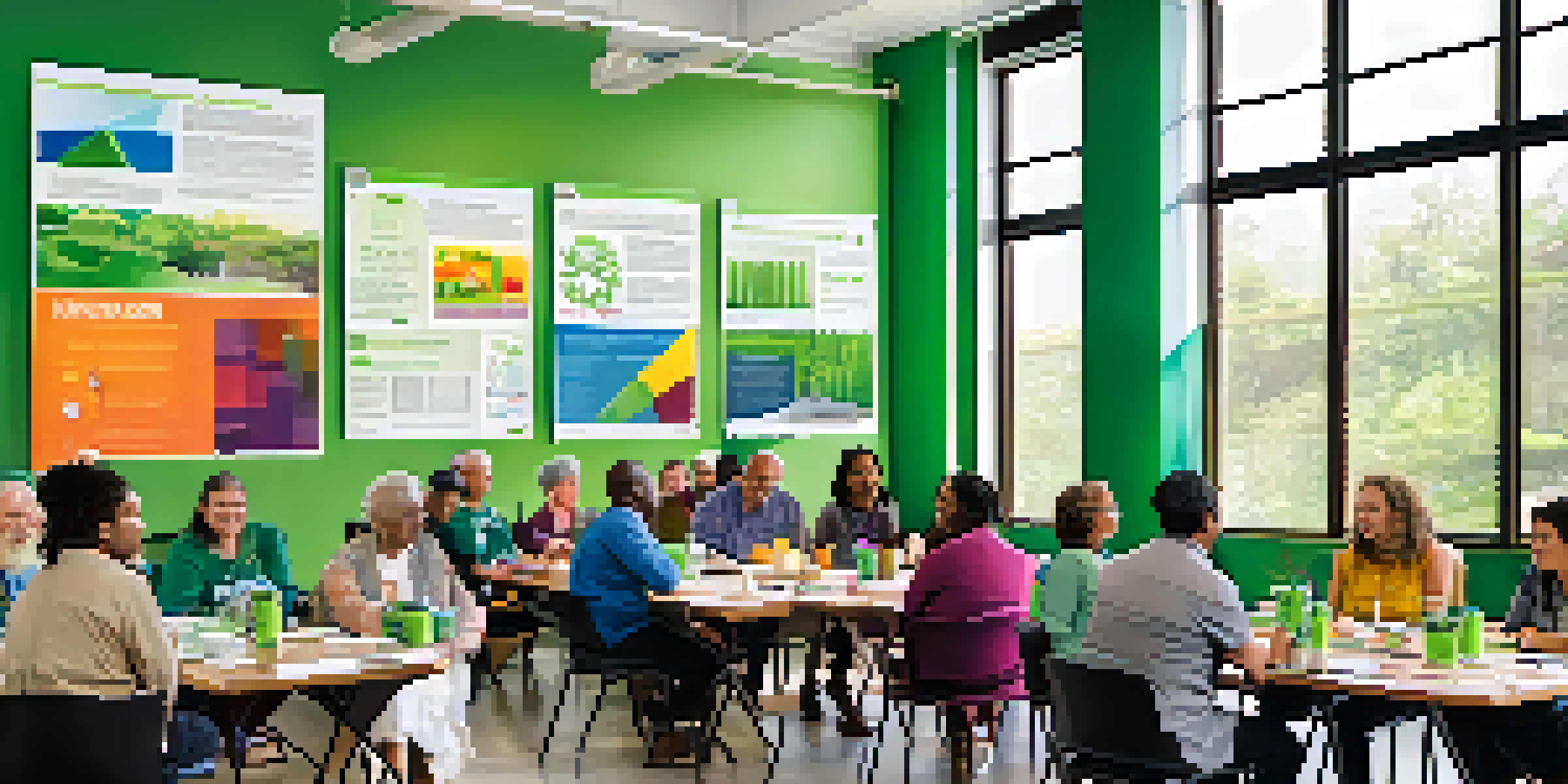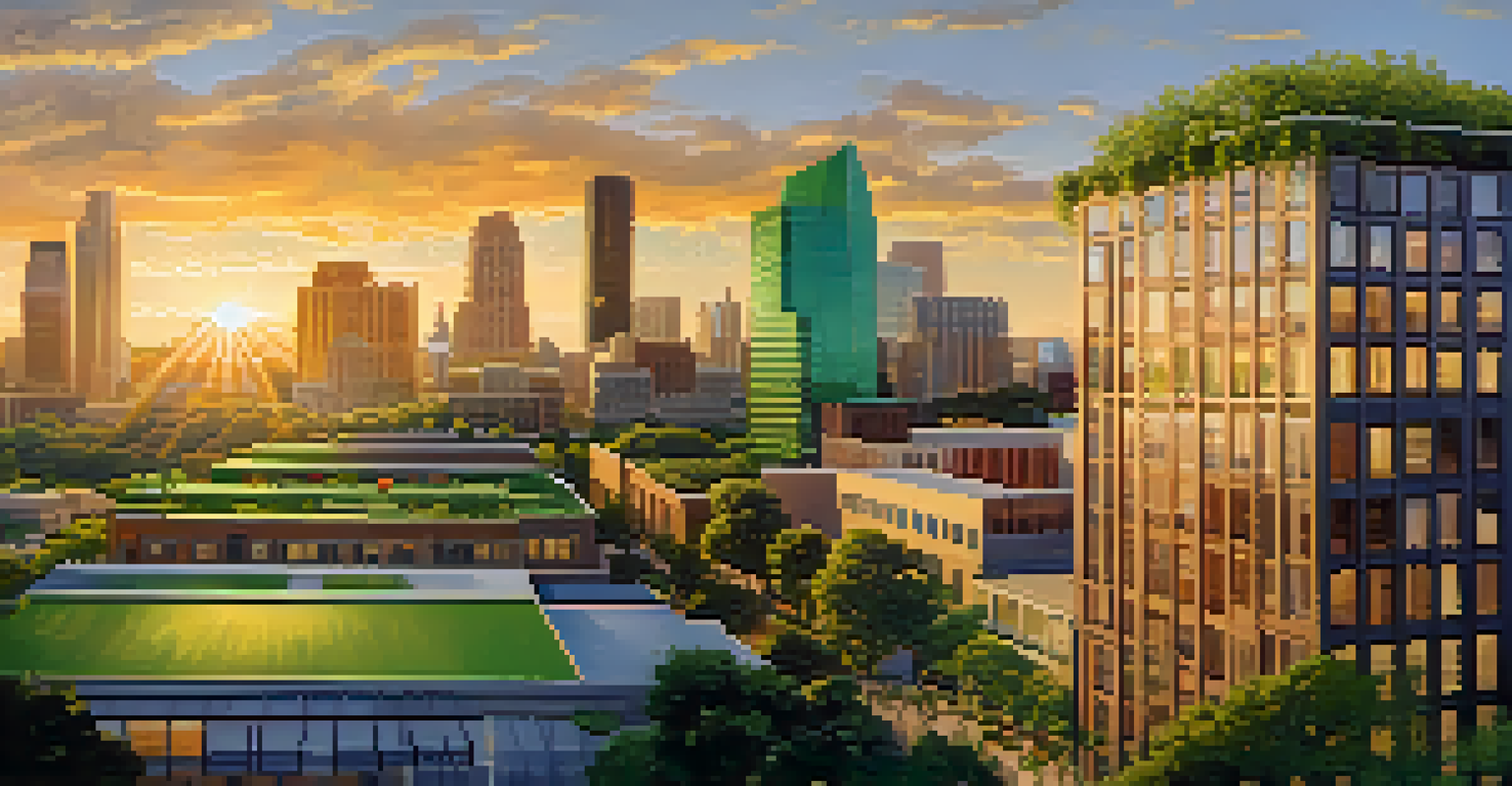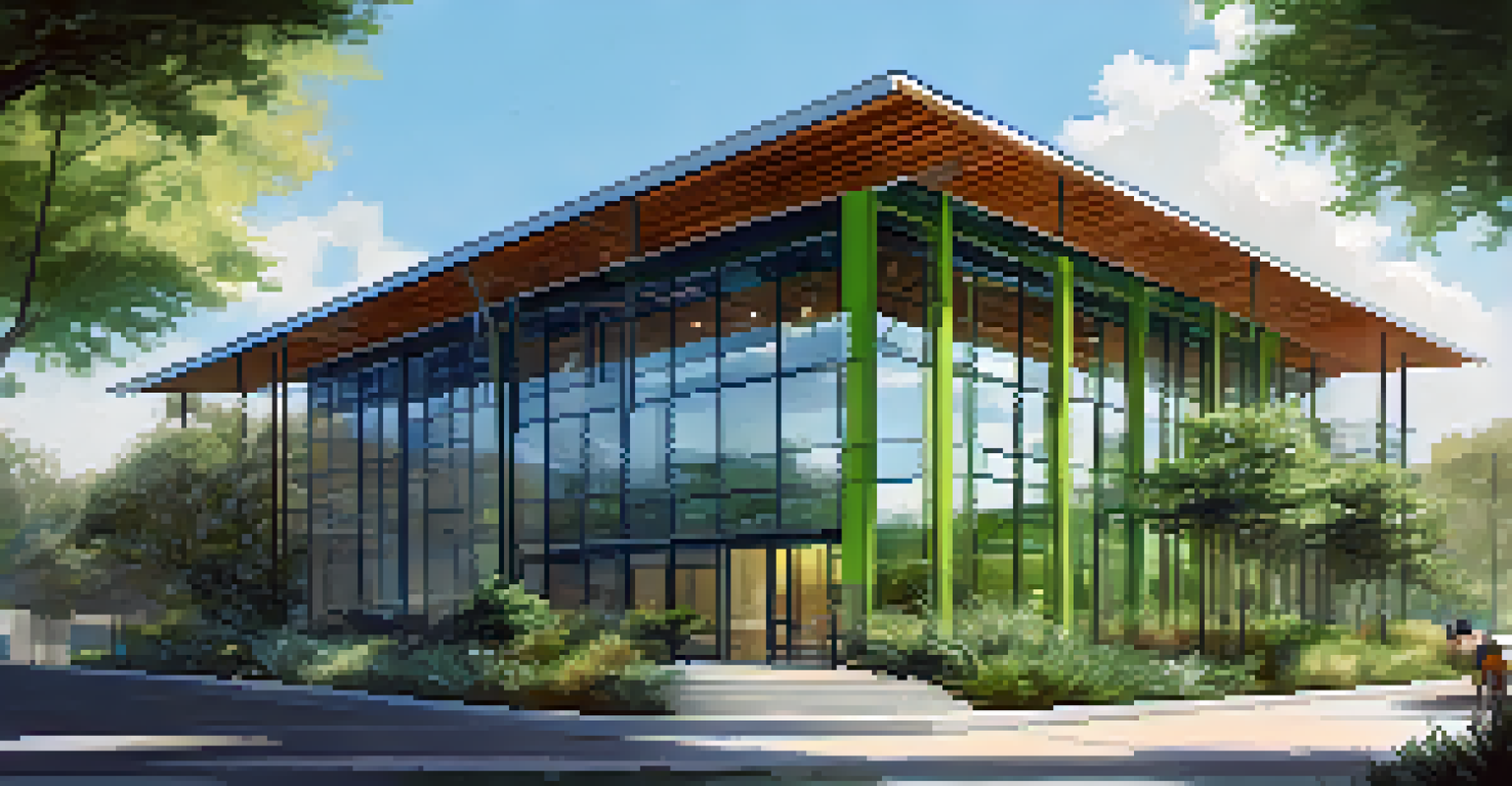Austin's Green Building Certifications: Setting Industry Standards

Understanding Green Building Certifications in Austin
Green building certifications are essential for promoting sustainable construction practices. In Austin, these certifications help ensure that buildings are designed and operated in environmentally friendly ways. This initiative not only benefits the environment but also enhances the quality of life for residents.
Sustainability is no longer about doing less harm. It's about doing more good.
The two primary certifications in Austin are LEED (Leadership in Energy and Environmental Design) and Green Built Texas. Both programs focus on energy efficiency, water conservation, and sustainable site development. By adhering to these standards, builders can significantly reduce their ecological footprint.
Moreover, green building certifications can lead to financial benefits, such as lower utility costs and increased property value. As more developers recognize these advantages, the demand for certified buildings in Austin is on the rise.
The Role of the City of Austin in Green Building
The City of Austin plays a crucial role in promoting green building practices through its policies and programs. The city has established a comprehensive framework to encourage environmentally responsible development. This includes offering incentives for developers who pursue green certifications.

One of the city’s key initiatives is the Austin Energy Green Building Program, which provides resources and guidance to builders. This program helps streamline the certification process, making it easier for developers to implement sustainable practices. In turn, this fosters a community that values and prioritizes sustainability.
Green Certifications Enhance Sustainability
Green building certifications like LEED and Green Built Texas promote eco-friendly construction, benefiting both the environment and residents.
Additionally, the city collaborates with various stakeholders, including architects, builders, and environmental organizations. These partnerships enhance the effectiveness of green building initiatives and ensure that Austin remains a leader in sustainable development.
Benefits of Green Building Certifications
Green building certifications offer numerous benefits that extend beyond environmental impact. For instance, buildings with these certifications often have improved indoor air quality, which contributes to better health for occupants. This is particularly important in urban settings where pollution can be a concern.
The greatest threat to our planet is the belief that someone else will save it.
Moreover, certified buildings typically consume less energy and water, resulting in significant cost savings over time. This financial incentive can make a compelling case for developers and homeowners alike. In Austin's competitive real estate market, sustainability can also be a strong selling point.
These certifications often lead to increased community pride and engagement as residents feel part of a larger movement towards sustainability. As more people become aware of these benefits, the push for green building practices continues to grow.
Challenges in Achieving Green Building Certifications
Despite the clear advantages, there are challenges associated with obtaining green building certifications. The certification process can be complex and time-consuming, often requiring a significant investment of resources. This can deter some builders from pursuing these eco-friendly goals.
Additionally, the upfront costs of implementing sustainable materials and technologies can be a barrier. Developers may be hesitant to invest in these innovations without a guaranteed return. However, many find that the long-term savings and market appeal outweigh these initial expenses.
City Support Drives Green Initiatives
Austin's city policies and programs, including the Austin Energy Green Building Program, provide essential resources and incentives for builders pursuing sustainability.
Lastly, there can be a lack of awareness or understanding of the certification process among builders. This highlights the need for ongoing education and support from the city and industry organizations to help overcome these hurdles.
Community Engagement in Green Building Initiatives
Community engagement is vital for the success of green building initiatives in Austin. Local organizations and advocacy groups often host workshops and events to raise awareness about the importance of sustainability. These efforts encourage residents to support green building practices and participate in the certification process.
Moreover, community feedback can play a significant role in shaping green building policies. Engaging residents allows for a more inclusive approach to development, ensuring that the needs and desires of the community are taken into account. This collaboration fosters a sense of ownership among residents.
As communities become more involved, the demand for sustainable buildings will likely increase. This grassroots support can drive developers to prioritize green certifications, contributing to a healthier environment for everyone.
Future Trends in Austin's Green Building Landscape
Looking ahead, several trends are emerging in Austin's green building landscape. One notable trend is the increased focus on resilience and adaptability in building designs. As climate change continues to impact urban areas, builders are looking for ways to create structures that can withstand extreme weather events.
Another trend is the integration of smart technology into green buildings. Home automation systems that monitor energy usage can enhance efficiency and reduce waste. This innovative approach not only supports sustainability but also attracts tech-savvy residents who value modern amenities.
Community Involvement Fuels Demand
Active community engagement and feedback are crucial for increasing the demand for green building practices in Austin, fostering a healthier environment.
Finally, the continued collaboration between the city, developers, and the community will be crucial for sustaining momentum. By working together, stakeholders can ensure that Austin remains at the forefront of green building practices, setting an example for cities nationwide.
Conclusion: Austin as a Model for Sustainable Development
Austin's commitment to green building certifications demonstrates its leadership in sustainable development. The city's proactive approach, combined with community engagement, sets a powerful example for other cities to follow. By prioritizing environmentally responsible practices, Austin is shaping a more sustainable future for its residents.
As the demand for green buildings continues to grow, the benefits will extend beyond individual projects. A collective focus on sustainability can lead to improved public health, economic vitality, and environmental resilience. This holistic approach creates a win-win situation for everyone involved.

Ultimately, Austin's journey towards becoming a green building hub highlights the importance of collaboration and innovation in addressing the challenges of urban living. With ongoing commitment and creativity, the city is well-positioned to inspire a broader movement towards sustainability.